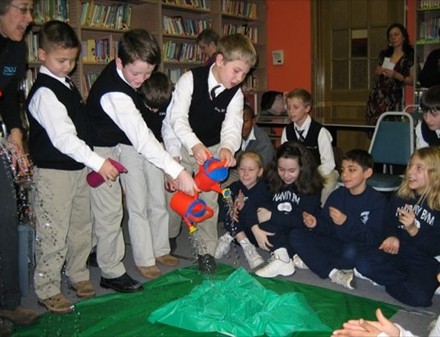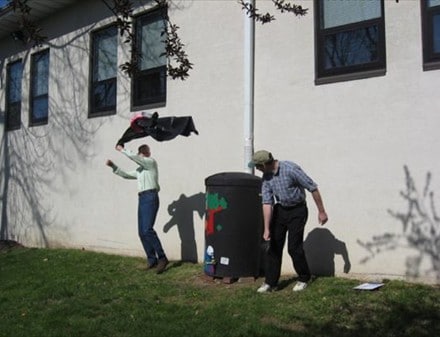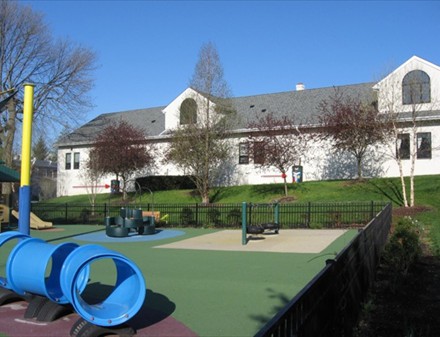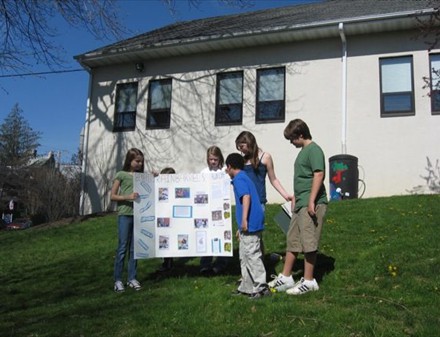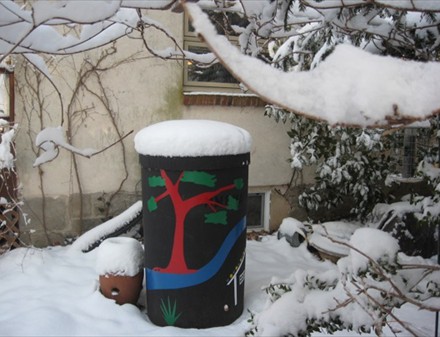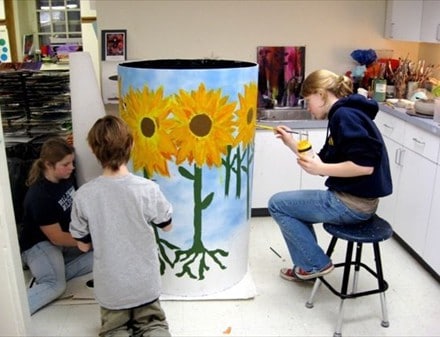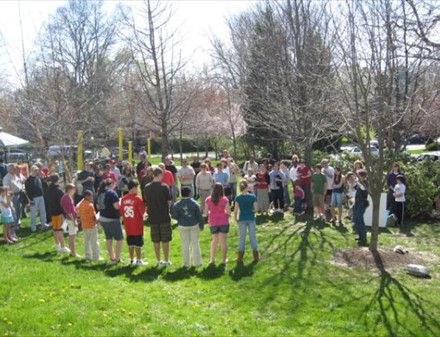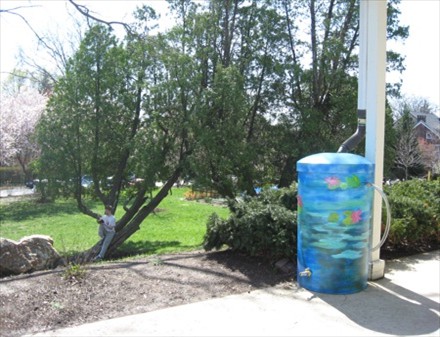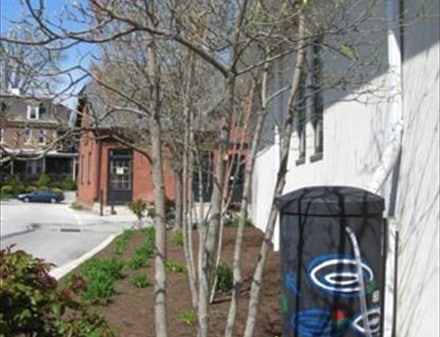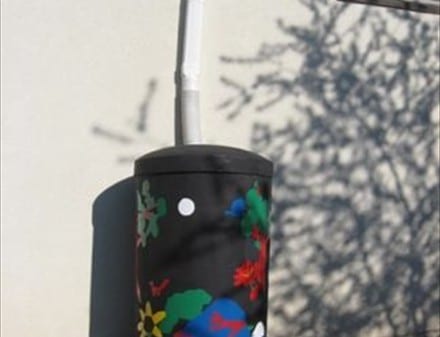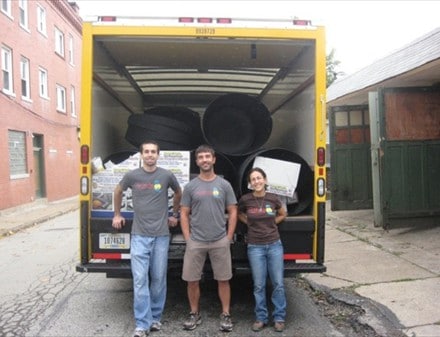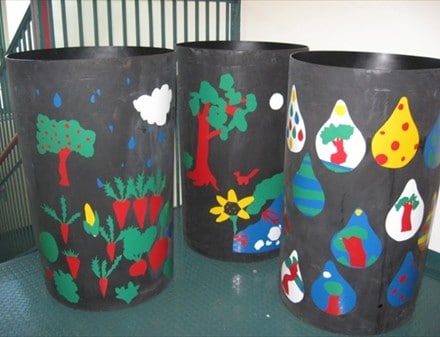The Rain Barrel Project was a program for public and private school students in Media Borough to learn about the problems of stormwater runoff and how that rainwater affects their school, neighborhood and local streams.
Students created designs that were transferred to 133 gallon rain barrels that were based on their understanding of the need to direct rain into the ground. The project included a public slide presentation on rain barrels and a rain barrel unveiling and student presentations at Media’s Earth Day Festival. These decorated barrels were installed at their school sites and in public areas of Media Borough in the spring of 2009.
This following content was produced as part of The Rain Barrel Project.
Reasons to Have a Rain Barrel at Home
- Keep water out of storm and combined sewer systems.
- Protect our rivers, lakes, and streams from runoff pollution.
- Control moisture levels around foundation of home.
- Provide oxygenated, un-chlorinated water, ideal for plants.
- Direct overflow to where you want it.
- Reduce water and wastewater bills.
- Conserve water in the summer months, when demand is the highest.
Rain Barrel Installation and Maintenance Checklist
The overflow from the barrel must be directed into a landscaped bed or lawn area at least 4 feet away from the foundation. Don’t allow the water to overflow and saturate the ground around your home’s foundation; use an adjustable diverter or an overflow pipe.
The barrel must be placed on a flat and level surface. 50 gallons of water weighs 400 pounds and you don’t want it to tip over.
Consider raising your barrel about two feet off the ground in order to enhance gravity flow into a hose and get good drainage. Cinder or landscaping blocks provide a good base. Remember, the higher you place your barrel, the more water pressure you get from your hose but use caution balancing height with stability. Barrels larger that 60 gallons should not be raised on any small pedestal.
Place your rain barrel on a surface that is pervious, like mulch or gravel. Otherwise, water could pool on paved areas and become a breeding ground for mosquitoes.
Clean your gutters on a regular basis, and empty your rain barrel ideally within a week after a rain event to optimize your use for the next rain event. Leave the tap open if you won’t be able to empty it.
Winter Care
Rain barrels need special care in climates that have winter temperatures below freezing.
- Empty buckets, watering cans, rain barrels. Emptying reduces freezing damage, prevents the accumulation of debris and allows for any needed repairs or refurbishing.
- Disconnect downspouts and redirect. Place barrel on its side and flush debris out with garden hose. You can reconnect the barrel if you have a diverter to redirect the flow back into the downspout. If your barrel is designed for winter weather (In southeastern PA) to allow for expansion in case water collects, you can leave it standing, but keep the spigot open.
- Put away hoses and sprinklers. Drain completely. Check for cracks or other damage. Store in a location where they will not be subject to physical damage or cover with a tarp.
Words of Warning
- Never allow children to play or climb on rain barrels!
- Rain barrels are not to be used for pet or human drinking water.
- Do not use if your house has asbestos roofing shingles. If you are concerned about water quality for use in a pond or edible garden, release “first flush” of water from bottom of barrel into lawn/garden area. You can then use the remainder of water as you wish.
Rain Barrel Project Photo Gallery
- Media Elementary School – outdoor contact paper designs
- Nativity BVM schoolwide introduction to watersheds
- Barrel unveiling at the Media Clean-Up Green-Up Day Festival
- Community Center – Media Borough, by the Tot Lot
- Sunflower barrel by Media Providence Friends School at Media Library
- Community festival – Media Providence Friends School poster
- Media residence
- Media Providence Friends School – painting barrel
- Barrel by Nativity BVM school – front of Media Library
- Community festival – Nativity BVM reading rain and river poetry
- Community Center Media Borough, barrel by Media Providence Friends School
- Community Center – Media Borough
- Media Elementary School
- Barrel pick-up from Nine Mile Run Watershed Association
- Media Elementary School – outdoor contact paper design


